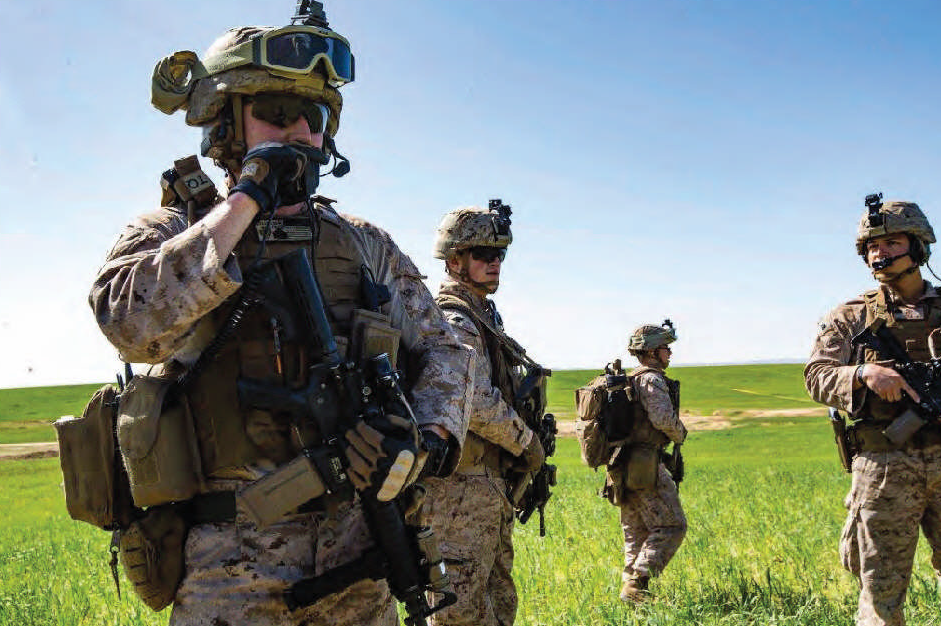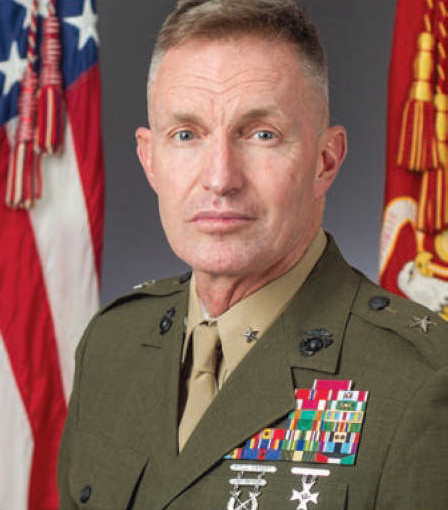by Bradley J. Meyer
Why did the Marines win the Battle of Belleau Wood? The actions on 11 June 1918 were key. On that day, 2d Battalion, 5th Marines charged across “the wheatfield,” decisively entered the wood, broke the German line, and drove across the breadth of the wood. They cleared most of the area, along with an attack the following day, but the wood was not finally cleared until 26 June because of a number of factors: exhaustion of the Marine Brigade, partial reinforcement and recovery of their position by the Germans and the ensuing period of gas warfare trying to maximize American casualties, and a final defensive line to the north. But the actions on 11 June broke the back of the German defense.
German sources make clear why the Marine attack of 11 June succeeded. A small party of Marines, who remain unidentified to this day, after suffering heavy casualties assaulting across the wheatfield, hit an undefended gully just after entering the wood. The Germans had stationed forces to cover this gully, but they were taken out by the preparatory artillery fire. Furthermore, the gully was a weak point; not only was it a junction point between two different regiments (the 461st of the German 237th Infantry Division and the 40th of the German 28th Infantry Division) but it was also a junction point between the two divisions-the 237th and the 28th. Working down the gully, this party of Marines, and others who no doubt followed them, came in behind the right flank of the German 2/40th Regiment and rolled up its two rightmost companies from the flank and rear. Marines attacking from the southern part of the wood (2/6) hit the battalion from the front, while elements of 2/5 continued rolling up the battalion from its right rear. The 2/40th Battalion broke. Large numbers of Germans surrendered or were shot as they tried to escape the collapsing German position.
Meanwhile, the German battalion to the left of the penetration point (from the Marines’ perspective), the 1st Battalion, 461st Regiment, was rolled up from its left by Marines who exploited the newly opened gap, surrounding the two leftmost German companies. When the Germans brought up their reserves, these companies had to fight their way out in “savage hand to hand combat.”1
In what was no doubt a highly confused action, the Marines of 2/5 drove all the way across the wood; they arrived on the east side of Belleau Wood, but they thought they were on the north side. They looked out of the wood and saw the village of Bouresches, which they thought was Belleau village, and they looked at Belleau and thought it was Torcy, which was north of Belleau Wood. This all seemed good, since the original plan had been to enter the wood, turn north, and clear it to the north end. But in fact, the north end of the wood was still occupied by substantial German forces, which in fact were behind and to the rear of the left flank of the Marine line. It took some time for 2/5’s commander, LtCol Frederic M. Wise, and all of his company commanders to accept the idea that they had completely lost orientation and faced a serious threat to their flank and rear.2
In January 2018, myself and Maj Ryan Gordinier of the School of Advanced Warfighting (SAW) class of 2018 had the opportunity to reconnoiter the battlefield, preparatory to an expanded SAW staff ride to the battlefield. Already aware of this history, I hoped perhaps to be able to find the critical gully that enabled the rolling up of the German position. This proved to be possible. If you follow the attack path of 2/5 across the wheatfield, toward the end of the assault path of 2/5, there is a kind of depression that would offer cover to a standing man from the German machine guns known to have been off to 2/5’s left flank at Hill 169. (See Map l.)It is also the case that a kind of a ridgeline conceals the tree line off to the south of 2/5’s line of attack (meaning that there would be no fire from that section of the woods).3 It would be a natural thing for troops to move into that draw to find shelter from fire.
If you continue in the lowest part of this draw, you hit a little stream running through it, and if you continue down this stream, you hit the woods, where the stream becomes a gully perhaps twenty yards wide. If you continue down the stream, the valley widens until it turns into the central ravine which enters Belleau Wood from the northeast.
This little gully was in fact the gully that enabled 2/5 to get on the right flank of the German 40 th Regiment and. roll it up. The German 461st Regiment accused the 40th Regiment of breaking from a Marine frontal attack, enabling the Marines to roll up the left flank of the 461st. Responding to this accusation, the commander of the German 28th Division, General Gusav Boehm, stated that the flank of the 40th Regiment had been rolled up by a Marine attack coming up the gully of the central ravi neri That central ravine was İn the German 237th Divisions sector, not the 28th’s. Therefore, a contemporary German source specifically fixed the gully the Marines used to enter the German position. This gully İs not obscure or easily confused with other gullies in the area; it is the western end of the main gully in Belleau Wood.
It is apparent what happened. After crossing the wheatfield, some Marines of 2/5 had gotten into the gully, which according to German accounts was not covered, the positions intended to cover İt having been taken out by artillery fire. German accounts say there were trench mortars intended to help cover 2/40th’s left flank. But as soon as they opened fire, Marines assaulted out of the gully and overran them. Then, the whole German line was rolled up as previously described.
This reconstruction of events helps clarify an iconic image of Belleau Wood, Marines charging machine guns with bayonets. Generally speaking, in World War I, charging machine guns with bayonets didn’t work too well. But a heavy machine gun’s are of fire İs limited by its tripod to about 90 degrees to its front. The tripod can be shifted, but that takes some rimeri So, if you came upon a machine gun from the rear, İt might make sense to charge İt before the trail could be shifted.
American accounts of the battle are much less clear than the Germans’. But if you think about İt, İt was not necessarily memorable to particular Marines that no one was shooting at them as they moved through a gully. Some mortars opened up off to the right, so they were rushed, and then there was a lot of confused fighting İn which the little group rushed one or more German machine guns, possibly from the rear. When the confusion died down, everyone thought the battalion had turned left and driven to the north, but as it turned out, it had driven straight east.
It is telling that for years after the battle, LtCol Wise argued that the fight would have gone a lot better if they had followed his plan to attack farther to the north. Considering the astonishing good fortune of the attack as İt actually took place, this is evidence that he never understood what had actually happened. Ironically, that may be true of all the Marines who fought on 11 June.
The Germans, however, knew what had happened to them.
What can be said by way of analysis and summary? First of all, this was very much a maneuver warfare battle. The Marines hit a gap and poured through it.
The Marines at Belleau Wood showed a high level of initiative and willingness to engage İn combat at low levels, another maneuver warfare tenet. A lot of troops might have sat down and awaited orders once they reached the safety of the gully. As military historian Edward G. Len gel put İt:
Other men might have waited for direction or slavishly followed orders that made no allowance for such an opportunity, but the Marines simply drove along the ravine and slammed with unstoppable momentum into the enemy flank and rear/1
The Marines attacked whatever enemy was nearest. In the confused fighting in Belleau Wood, perhaps no one on the Marine side had a complete picture of what was going on, but the overall effect was to break the German position.
In the charge across the wheatfield on 11 June (see Map 2), the first two companies suffered heavy losses from the flanking German machine-gun fire. The two rear companies suffered less. A small group of Marines hit a gap,- which German sources say was opened up by artillery fire-poured through the gap, crossed a small plateau, and rolled up the main German line. Other Marines, in a confused wooded environment where everyone quickly lost basic orientation (such as which way was north), exploited this gap and rolled up the German line to the north (461st Regiment) as well.
That, together with a lot of fighting spirit in all phases of the battle, İs what won the battle of Belleau Wood.









